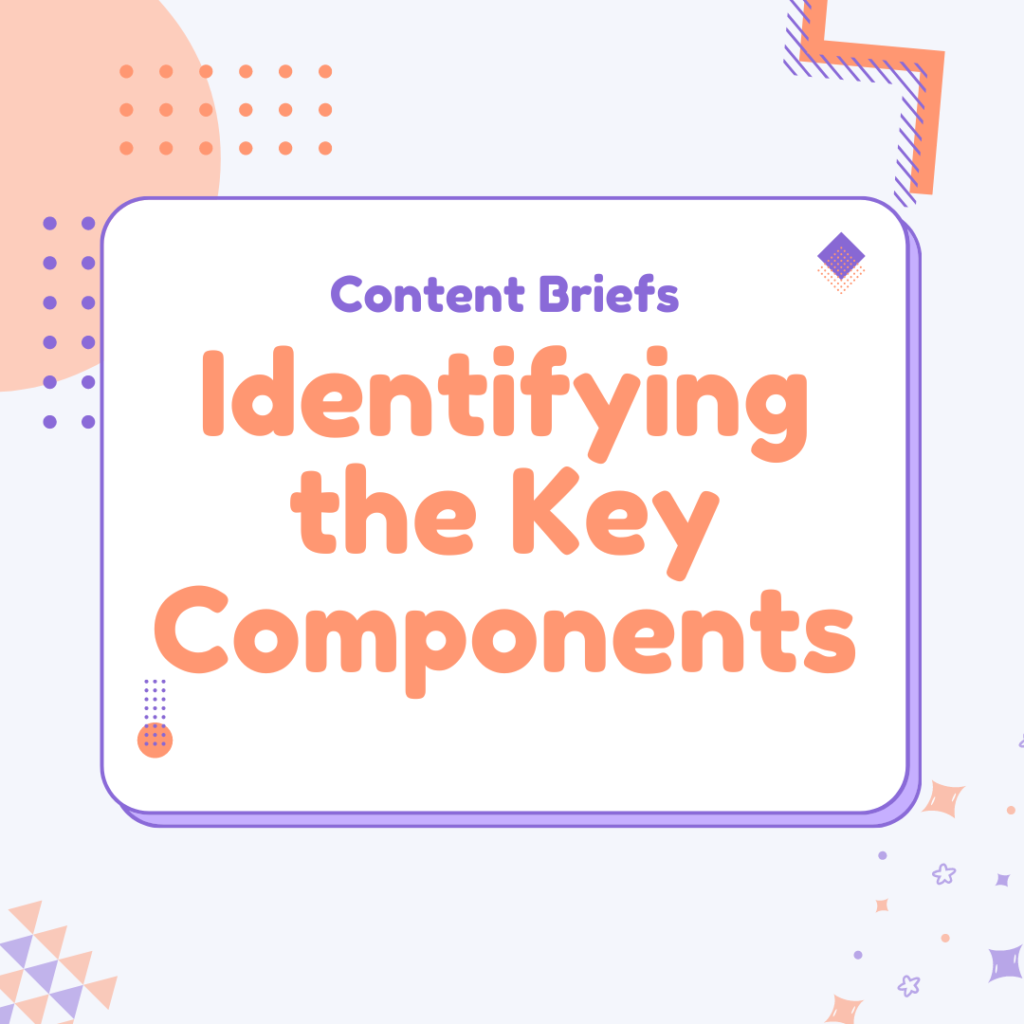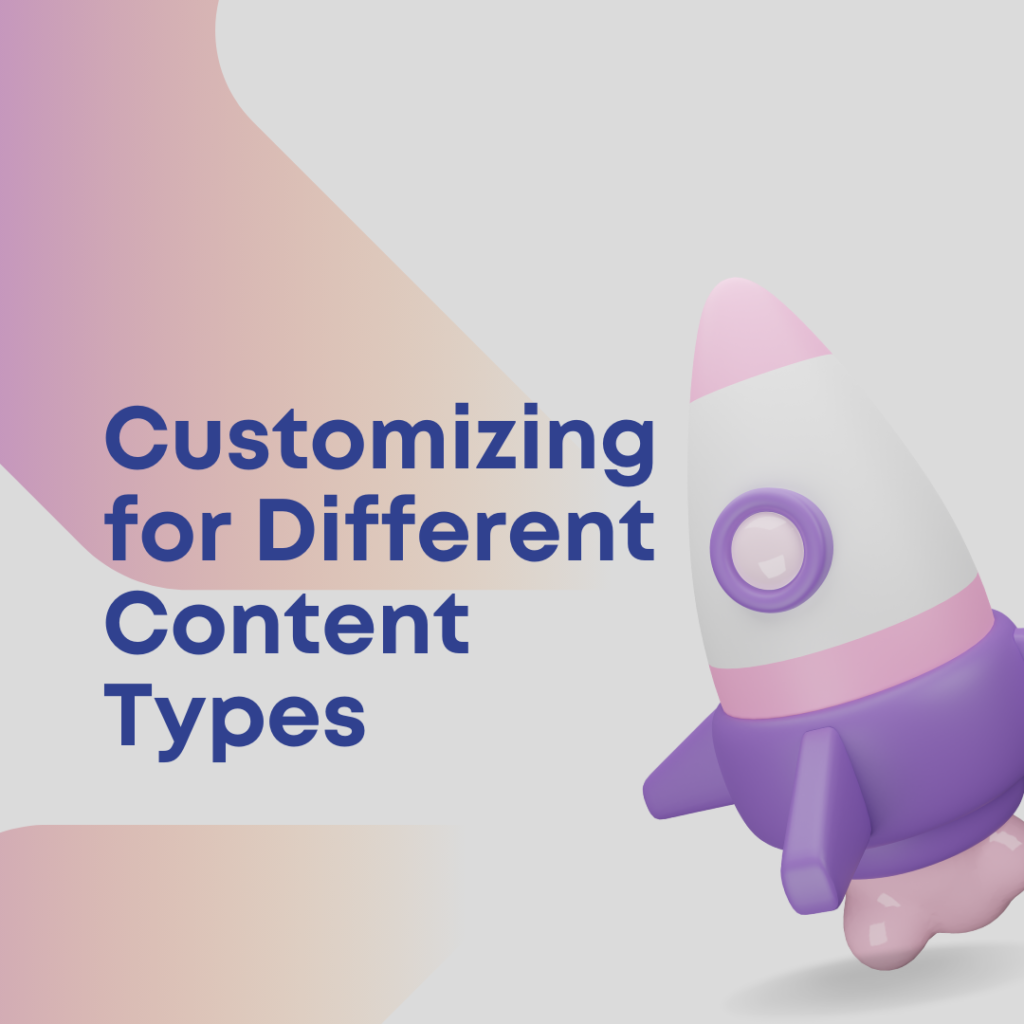Creating content briefs is a fundamental step in aligning writers with the strategic goals of content creation.
By defining the purpose, scope, and essential components of a content brief, content creators can ensure that their work not only meets the intended objectives but also resonates with the target audience.
This step-by-step guide on how to write a content brief will walk you through the process of crafting effective content briefs, integrating them into your marketing workflow, and leveraging them for scalable content production.
Key Takeaways
- A content brief should clearly outline the goals, audience, and key details for content creation, ensuring consistency and efficiency.
- The ideal content brief is concise yet comprehensive, fitting within 1-2 A4 pages and avoiding unnecessary complexity.
- Templates are invaluable for standardizing content briefs, saving time, and facilitating collaboration among team members.
- Effective content briefs incorporate SEO strategies and audience engagement tactics to maximize the impact of the content.
- Regular evaluation and updating of content briefs are crucial for continuous improvement and adapting to evolving marketing strategies.
Understanding the Essentials of a Content Brief
Defining the Purpose and Scope
Before diving into the creative process, it’s crucial to start with the ‘Why’—the driving force behind your content. This high-level scope statement outlines the project’s mission and the specific goals you aim to achieve. Clarity is paramount, especially when external collaborators may not share the same familiarity with your brand.
Start by asking yourself and your team a series of questions to establish a solid foundation for your content brief:
- What is the purpose of this content project?
- What message or value do we want to convey through this content?
- Who is our target audience, and what are their preferences and expectations?
- Are there specific problems we are addressing with this content?
- What are the desired budget and timeline for completion?
By providing precise guidelines, you minimize the potential for misunderstandings and revisions later on. Ensure that your objectives are specific, measurable, relevant, and time-bound to facilitate the evaluation of the project’s success.
Every content project requires a clear timeline and budget. Without these parameters, projects can become unwieldy and exceed resources. By defining these early on, you set the stage for a well-organized and focused content creation process.
Identifying the Key Components

A well-crafted content brief should serve as a roadmap for content creators, guiding them through the creation process with clarity and purpose. Identifying the key components of a content brief is crucial to ensure that all necessary information is communicated effectively. These components typically include:
- The primary goal or objective of the content
- The target audience and their characteristics
- Key messages and brand identity to be conveyed
- The tone and style appropriate for the brand
- Specific keywords or topics to be included for SEO
- Any required calls to action (CTAs)
By meticulously outlining these elements, content creators can be sure they understand how to write a content brief, align their work with the strategic vision and maintain consistency across various pieces of content.
Additionally, it’s important to specify the format and structure expected for the content, as well as any relevant deadlines or milestones. This ensures that the content not only meets the strategic goals but also fits within the broader content calendar and marketing initiatives.
Balancing Detail with Brevity
Creating a content brief is a delicate act of balancing the necessary details with the need for conciseness. A brief should be comprehensive enough to guide the writer but not so detailed that it stifles creativity or becomes overwhelming. To achieve this balance, consider the following points:
- Define the core message in a single, clear sentence. This ensures focus without overcomplicating the brief.
- Use bullet points to outline key elements such as target audience, tone, and desired emotional outcome.
- Limit the length of the brief to 1-2 A4 pages, depending on the complexity of the topic.
Remember, the goal is to provide a clear direction without dictating every step of the writing process. A well-structured brief allows for flexibility and creativity within a defined framework.
By adhering to these guidelines, you can craft a brief that is both informative and succinct, facilitating an efficient and effective content creation process.
Designing an Effective Content Brief Template
Choosing the Right Template Structure
Selecting the appropriate template structure is crucial for the success of your content brief. Organization is key; a well-structured template not only streamlines your thoughts but also ensures that your content is easy to follow. Consistency is another benefit of a proper template, as it helps maintain the client’s formatting, style, and grammar preferences, reducing the need for extensive editing.
Templates are not just about structure; they also encompass SEO guidelines to enhance content visibility and provide measurable results. Plus, the ability to reuse template sections for similar projects saves time and effort, establishing a consistent tone of voice that resonates with the target audience.
The perfect template is detailed and addresses all project-related matters, eliminating any chance of miscommunication. By including all stakeholders in the template, collaboration becomes seamless, and managing multiple projects becomes more efficient.
Remember, a template is a bridge that helps you navigate the challenges of content creation, ensuring a balance between creativity, structure, and quality.
Incorporating Essential Elements
When designing a content brief, it’s crucial to incorporate essential elements that guide the creation process effectively. A well-structured brief should include logical sections and subsections, ensuring that each part of the content has a clear purpose and flows smoothly from one point to the next.
- Create Logical Sections and Subsections: Organize the brief into distinct sections that outline the main topics and subtopics. This helps writers understand the structure and focus of the content.
- Generate Captivating Headings and Subheadings: Use headings to capture attention and subheadings to break down the content into digestible pieces.
- Specify Key Points: Clearly define the key points that need to be addressed within the content to maintain focus and relevance.
By adhering to these core elements, content creators can ensure that the brief serves as a roadmap, leading to content that is both engaging and aligned with the intended message.
Customizing for Different Content Types

When it comes to content creation, one size does not fit all. Customizing your content brief for different content types is crucial for guiding writers to produce material that resonates with the intended audience and fulfills specific objectives. For instance, a blog post may require a conversational tone and storytelling elements, while a press release demands a formal tone and adherence to industry standards.
By tailoring the content brief to the type of content, you ensure that all necessary elements are included and that the content aligns with the overall marketing strategy.
Here’s a simple guide to customizing your content brief template for various content formats:
- Website Content: Focus on clarity and call-to-action.
- Blog Post: Emphasize storytelling and reader engagement.
- Press Release: Include factual information and official quotes.
- Case Study: Highlight real-world applications and results.
- Call to Action: Be concise and direct, prompting immediate response.
Remember, the goal is to provide a clear framework without stifling creativity. The brief should serve as a roadmap, not a set of handcuffs. As highlighted by Zapier, personalizing your content brief is essential for different projects. Similarly, ClickUp templates offer a customizable foundation, ensuring consistency across various content types within your team or agency.
The Writing Process: Utilizing the Content Brief

Interpreting the Brief for Content Creation
Once you’ve mastered how to write a content brief, the next step is interpreting it effectively to produce high-quality content. A well-crafted brief serves as a roadmap, guiding writers through the content creation process. It’s essential to extract the core objectives and align them with the expected outcomes.
A content brief is the critical link between planning and the actual content creation.
Understanding the brief’s components, such as the working title, deadlines, and target audience, is crucial. Here’s a simple list to ensure you’re on the right track:
- Review the working title and align it with the content’s purpose.
- Note the deadlines to manage your time efficiently.
- Understand the goals to keep the content focused.
- Identify the target audience to tailor your language and approach.
- Incorporate specified SEO elements to optimize the content.
Remember, the brief is not just a set of instructions; it’s a reflection of the ambition and excitement for the content. Let it motivate and inspire your writing to achieve the best possible results.
Ensuring Consistency and Brand Alignment

Ensuring that each piece of content aligns with your brand’s identity is crucial for maintaining a consistent brand image. A content brief should serve as a compass for content creators, guiding them to embody the brand’s voice, tone, and style in every piece they produce. This alignment is not just about aesthetics; it’s about reinforcing the brand’s core values and mission in the minds of your audience.
To achieve this, include the following in your content briefs:
- Your brand’s mission, vision, and core values
- Detailed brand guidelines, including color schemes, fonts, and imagery
- The desired tone of voice for the content
- Reference to existing marketing materials for stylistic consistency
By providing a clear and comprehensive brief, you empower creators to produce content that feels like a natural extension of your brand.
Remember, consistency is key to building trust and recognition with your audience. Whether you’re working with in-house teams or external designers, clarity in your brief will ensure that everyone is on the same page, striving towards the same brand goals.
Addressing Common Pitfalls in Writing from Briefs
When content creators deviate from the content brief, the result can be a mismatch between expectations and the final product. To avoid this, it’s essential to recognize common pitfalls and implement strategies to overcome them.
One major issue is the inclusion of irrelevant information or mistakes, which can stem from a lack of understanding of the brief’s purpose. Ensuring that the brief is comprehensive and clear can mitigate this risk. Another challenge is the tendency to require extensive rewrites, which can be curtailed by aligning the brief closely with the brand’s goals and voice.
To maintain quality and efficiency, it’s crucial to address these issues proactively. A well-structured brief should guide the writer, not constrain creativity, while still achieving the desired emotional outcome and meeting SEO requirements.
Lastly, remember that a content brief is not just a set of instructions; it’s a tool for collaboration. It should facilitate communication between all stakeholders, from writers to project managers, ensuring everyone is on the same page.
Integrating Content Briefs into Your Marketing Workflow
Streamlining Collaboration with Templates
In the fast-paced world of content marketing, templates act as a catalyst for efficiency. By standardizing the content brief process, teams can focus on creativity rather than logistics. Templates ensure that all necessary information is captured uniformly, making it easier for everyone involved to understand their roles and responsibilities.
- Saves Time: Reusing sections across briefs reduces the time spent on creation.
- Enhances Clarity: Clearly defined sections improve comprehension for all team members.
- Promotes Consistency: A uniform structure across briefs maintains brand identity.
- Facilitates Communication: Real-time editing and commenting streamline feedback.
By leveraging templates, you can minimize miscommunication and keep your projects on track. Assign tasks, set deadlines, and customize sections to suit your content needs, ensuring a smooth workflow.
Remember, a well-structured template is not just a document; it’s a tool that empowers your team to produce high-quality content efficiently. It’s about crossing the ‘Challenges River’ and reaching the ‘land of streamlined writing processes‘.
Managing Timelines and Deadlines
Effectively managing timelines and deadlines within the content brief is crucial to the success of any marketing project. Ensure that each content piece has a clear and thorough timeline, including milestones that guide the progression from conception to publication. This not only keeps the project on track but also allows for transparency regarding the expected delivery dates.
Budget considerations should not be overlooked. Being upfront about financial constraints and expectations helps in aligning the project’s scope with available resources. Remember, unforeseen challenges can arise, potentially impacting your timeline. It’s advisable to have a contingency plan for such instances.
By setting clear goals and including a detailed schedule in your content brief, you provide a roadmap that helps writers and designers anticipate and manage their workload effectively.
Utilize a content calendar to visualize tasks according to their due dates. This tool can be tailored to display information on a daily, weekly, or monthly basis, ensuring that everyone involved is aware of upcoming deadlines. Transparency is key, so invite team members to access the calendar for maximum clarity on the project’s status.
Measuring the Impact of Well-Defined Briefs
To truly understand the value of a content brief, one must measure its impact on the content creation process and the final product. A good brief not only guides the writer but also enhances the content’s performance in terms of search rankings and audience engagement. By setting clear objectives and providing a strategic framework, a well-defined brief ensures that the content aligns with the company’s goals and SEO best practices.
The impact of a content brief can be quantified through various metrics. For instance, tracking the time spent on revisions, the number of drafts needed before finalization, and the content’s performance in search results can offer insights into the brief’s effectiveness. Additionally, feedback from writers and content managers can highlight areas for improvement in future briefs.
A well-defined brief is a blueprint for success, streamlining the content creation process and setting clear expectations for all parties involved.
Ultimately, the goal is to create a feedback loop where the outcomes of content guided by briefs inform the continuous refinement of the briefs themselves. This iterative process ensures that each brief is more effective than the last, leading to consistently high-quality content that resonates with the target audience and achieves the desired results.
Advanced Tips for Mastering Content Briefs

Incorporating SEO and Audience Engagement Strategies
In the realm of content creation, understanding how to write a blog introduction is pivotal for both SEO and audience engagement. A compelling introduction sets the tone for the entire piece, signaling to Google the value of your content and thus improving search rankings.
To captivate your audience from the outset, showcase your expertise on the topic and include elements that encourage engagement, such as surprising statistics or thought-provoking questions.
When structuring for SEO, consider the following points in your content brief:
- Needs help in structuring for SEO
- Is short on time and requires a quick method for assembling effective content
- Needs to create content that fills a content gap
- Provides detailed briefs for freelancers
- Seeks tips to enhance content marketing performance
Additionally, an SEO cheat sheet can be invaluable for writers. It should encompass guidance on headings, paragraph length, style tips, and meta descriptions. Aligning your content brief with your SEO strategy is essential to achieve your SEO goals.
Evaluating and Updating Briefs for Continuous Improvement
The lifecycle of a content brief doesn’t end with the publication of the content. Continuous evaluation and updating are crucial for ensuring that the briefs remain effective tools for content creation. After content goes live, it’s important to review performance data and feedback to identify areas for improvement.
- Analyze content performance metrics against the goals outlined in the brief.
- Gather feedback from the content creators on the brief’s clarity and usefulness.
- Update the brief to reflect new insights, such as changes in audience behavior or SEO trends.
By regularly revisiting and refining content briefs, you can adapt to changing market conditions and enhance the quality of your content.
Remember, a static brief may lead to stagnant content. Embrace the dynamic nature of content marketing by making your briefs living documents that evolve with your strategy.
Leveraging Briefs for Scalable Content Production
To achieve scalable content production, content briefs are indispensable tools. By standardizing the briefing process, you ensure that every piece of content aligns with your brand’s voice and objectives, regardless of the volume or the number of creators involved.
Content briefs serve as a blueprint for writers, enabling them to produce quality content efficiently. This is particularly beneficial when dealing with a high volume of content or a large team of writers. By having a clear and consistent brief, writers can focus on the creative aspects of content creation, knowing that the strategic elements are already defined.
The use of content briefs is a strategic move that not only saves time but also maintains content quality across the board.
Moreover, content briefs can be adapted for various content types, from blog posts to social media updates, ensuring that all content is cohesive and on-brand. This adaptability makes them a powerful asset for content managers looking to scale their production without sacrificing quality.
Conclusion
Crafting a comprehensive content brief is a pivotal step in the content creation process, ensuring that writers are well-informed and aligned with the content’s goals and objectives. By incorporating essential elements such as working title, deadlines, target audience, and SEO strategies, you set a clear path for producing impactful and optimized content. Remember, a well-structured content brief not only streamlines the workflow but also enhances the consistency and quality of your content output. As you apply the step-by-step guide outlined in this article, you’ll find that your content briefs become powerful tools for achieving higher search rankings, engaging your audience, and driving traffic to your brand.
Frequently Asked Questions
What exactly is a content brief?
A content brief is a document that outlines the key elements a writer needs to include in a piece of content, such as the topic, target audience, keywords, goals, and any specific instructions or resources. It serves as a guide to ensure the content meets the desired objectives and is consistent with the brand’s messaging.
How long should a content brief typically be?
A content brief should ideally be 1-2 A4 pages long. The length may adjust based on the complexity of the topic and the length of the content being produced. It’s important to keep the brief concise, using bullet points and linking to external sources or examples to save time and avoid overwhelming the writer.
What are the essential components of a content brief template?
A content brief template should include a working title, content goals, target audience, tone and style guidelines, key messages, SEO keywords, content structure and outline, and any specific requirements or resources. These components help the writer understand the scope and expectations of the content piece.
What common mistakes should be avoided when creating a content brief?
Common mistakes include being too vague or too detailed, failing to define the target audience, not providing clear objectives, omitting SEO considerations, and not aligning with the brand’s voice. A well-crafted brief should be clear, concise, and comprehensive enough to guide the writer without stifling creativity.
How do content briefs fit into the content marketing workflow?
Content briefs are integral to the content marketing workflow as they provide a structured approach to content creation. They ensure all team members are aligned on the content’s purpose and requirements, facilitate efficient collaboration, and streamline the process from planning to publication.
How can a content brief improve SEO and audience engagement?
A content brief can improve SEO by including keyword research, SERP analysis, and internal linking strategies. For audience engagement, the brief should focus on understanding the audience’s needs and interests, and suggest content formats and elements that are likely to resonate and encourage interaction.












